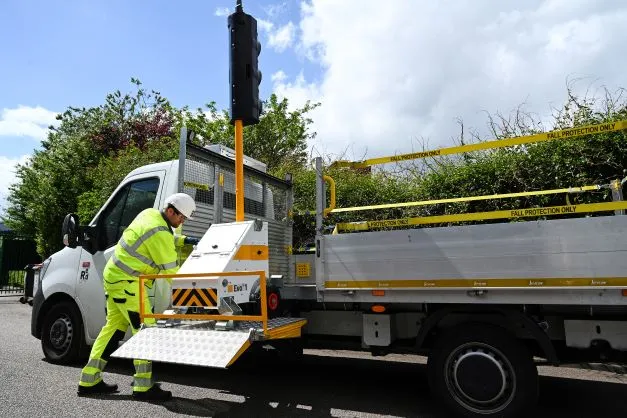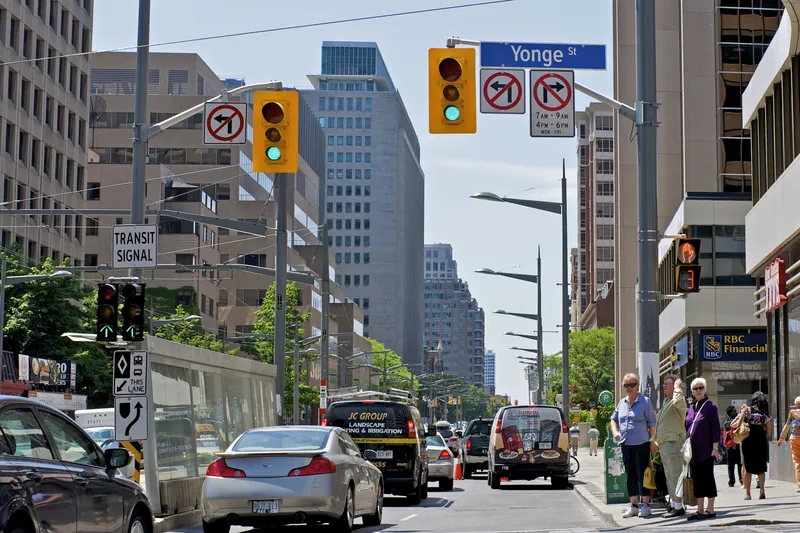Passengers on some of the busiest commuter lines in the UK can look forward to more frequent and more reliable trains following a deal to provide new traffic management technology on the Thameslink route through central London.
Network Rail and the Thameslink Programme have signed a contract with Hitachi Rail Europe (HRE) to deliver a step-change in technology through state-of-the-art traffic management technology.
July 28, 2015
Read time: 3 mins
Passengers on some of the busiest commuter lines in the UK can look forward to more frequent and more reliable trains following a deal to provide new traffic management technology on the Thameslink route through central London.
5021 Network Rail and the Thameslink Programme have signed a contract with 7427 Hitachi Rail Europe (HRE) to deliver a step-change in technology through state-of-the-art traffic management technology.
The new system will enable 24 trains per hour to run reliably through central London in each direction by 2018, allowing the Thameslink Programme to fulfil its ambition of revolutionising north-south travel through the capital.
HRE will supply Network Rail with a traffic management solution with options for the South East and London North Eastern programme, which will provide the framework for a blueprint to support the roll out of a full digital railway. This includes simulators, automatic routing systems and the Tranista traffic management platform.
Hitachi Rail’s traffic management systems support railway operations that can be reconfigured flexibly in keeping with passenger demand, to manage and control the running of the railway and support the rapid recovery of operations in the event of a delay or disruption.
Similar systems have been used on busy commuter networks in Japan, as well as the Shinkansen high speed lines and other main lines, for over 40 years.
Rail Minster Claire Perry said: “We are investing in the Thameslink programme because it will transform rail travel for customers in London and the south east, providing more seats and quicker journeys. It will also create thousands of jobs, making it a vital part of our long-term economic plan.
“Today’s announcement isn’t just about new technology, it’s a key way to improve customer journeys, by increasing reliability and making sure they have the right information at the right time. We have seen huge growth in the number of people travelling by train and this investment will play a key role in keeping those customers moving safely, reliably and comfortably.”
Thameslink Programme director Simon Blanchflower said: “Providing a frequent and reliable service through the heart of the city to a host of new destinations will only be possible thanks to this technology.
“Traffic management technology will provide extra guidance to our signallers and work with in-cab signalling and automatic train operation to deliver 24 trains per hour between London Blackfriars and St Pancras International. It will also improve the time it takes the railway to recover from delays and deliver enhanced customer information, to improve performance and passengers’ experience of our railway.”
Karen Boswell, managing director of Hitachi Rail Europe, said: “This is a fantastic achievement for Hitachi Rail in the UK, following on the back of the Class 395 high speed trains in 2009, the InterCity Express Programme (IEP) contract in July 2012 and Abellio’s ScotRail contract signed in March this year.
“Hitachi Rail is determined to strengthen its railway-related business in the UK and I look forward to working with Network Rail to deploy our proven Traffic Management System, which will bring significant benefits to rail commuters.”
Thameslink Programme director Simon Blanchflower said: “Providing a frequent and reliable service through the heart of the city and to a host of new destinations will only be possible thanks to this technology.”
“Traffic management will provide extra guidance to our signallers and work with in-cab signalling and automatic train operation to deliver 24 trains per hour between London Blackfriars and St Pancras International. It will also improve the time it takes the railway to recover from delays and deliver fantastic customer information, to improve performance and passengers’ experience of our railway.”
The new system will enable 24 trains per hour to run reliably through central London in each direction by 2018, allowing the Thameslink Programme to fulfil its ambition of revolutionising north-south travel through the capital.
HRE will supply Network Rail with a traffic management solution with options for the South East and London North Eastern programme, which will provide the framework for a blueprint to support the roll out of a full digital railway. This includes simulators, automatic routing systems and the Tranista traffic management platform.
Hitachi Rail’s traffic management systems support railway operations that can be reconfigured flexibly in keeping with passenger demand, to manage and control the running of the railway and support the rapid recovery of operations in the event of a delay or disruption.
Similar systems have been used on busy commuter networks in Japan, as well as the Shinkansen high speed lines and other main lines, for over 40 years.
Rail Minster Claire Perry said: “We are investing in the Thameslink programme because it will transform rail travel for customers in London and the south east, providing more seats and quicker journeys. It will also create thousands of jobs, making it a vital part of our long-term economic plan.
“Today’s announcement isn’t just about new technology, it’s a key way to improve customer journeys, by increasing reliability and making sure they have the right information at the right time. We have seen huge growth in the number of people travelling by train and this investment will play a key role in keeping those customers moving safely, reliably and comfortably.”
Thameslink Programme director Simon Blanchflower said: “Providing a frequent and reliable service through the heart of the city to a host of new destinations will only be possible thanks to this technology.
“Traffic management technology will provide extra guidance to our signallers and work with in-cab signalling and automatic train operation to deliver 24 trains per hour between London Blackfriars and St Pancras International. It will also improve the time it takes the railway to recover from delays and deliver enhanced customer information, to improve performance and passengers’ experience of our railway.”
Karen Boswell, managing director of Hitachi Rail Europe, said: “This is a fantastic achievement for Hitachi Rail in the UK, following on the back of the Class 395 high speed trains in 2009, the InterCity Express Programme (IEP) contract in July 2012 and Abellio’s ScotRail contract signed in March this year.
“Hitachi Rail is determined to strengthen its railway-related business in the UK and I look forward to working with Network Rail to deploy our proven Traffic Management System, which will bring significant benefits to rail commuters.”
Thameslink Programme director Simon Blanchflower said: “Providing a frequent and reliable service through the heart of the city and to a host of new destinations will only be possible thanks to this technology.”
“Traffic management will provide extra guidance to our signallers and work with in-cab signalling and automatic train operation to deliver 24 trains per hour between London Blackfriars and St Pancras International. It will also improve the time it takes the railway to recover from delays and deliver fantastic customer information, to improve performance and passengers’ experience of our railway.”









